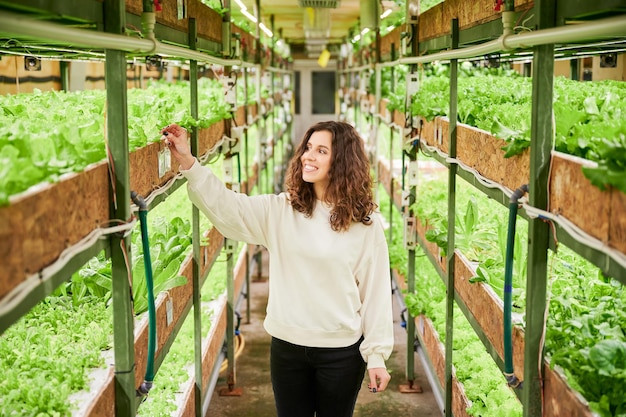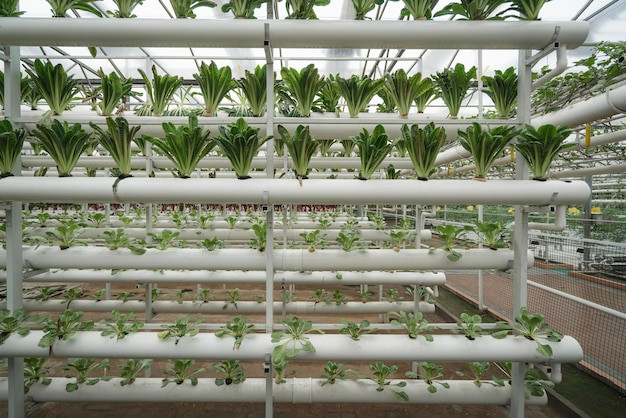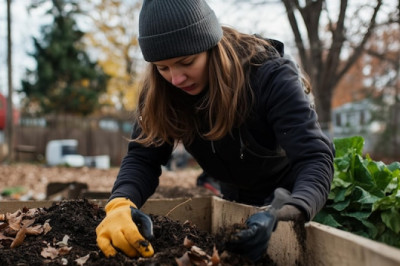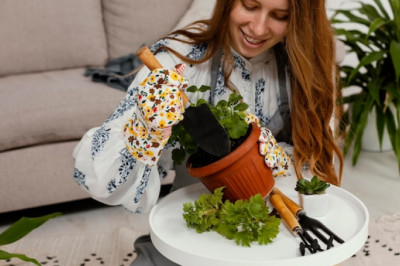Vertical farming is an innovative agricultural practice that allows for the cultivation of plants in vertically stacked layers or structures, often integrating various sustainable technologies. This method is particularly advantageous for those with limited space, as it maximizes crop output in a compact area. Whether you're an urban dweller with just a balcony or a homeowner with a small backyard, vertical farming can transform your green space into a lush, productive garden. In this guide, we'll explore the essentials of vertical farming and provide step-by-step instructions on how to create your own vertical farm in your garden.
Understanding Vertical Farming
Before diving into building your vertical farm, it's crucial to understand what vertical farming entails. It's a method that uses soil, hydroponic, or aeroponic growing systems to cultivate plants in stacked layers. This approach not only saves space but also conserves water, reduces transportation costs, and minimizes the use of pesticides and herbicides. Vertical farms can be set up indoors or outdoors, making them versatile for various environments. By understanding the principles of vertical farming, you can better plan your garden layout and select the appropriate technologies and plants for your setup.
Choosing the Right Location
The location of your vertical farm is paramount for its success. If you're planning an outdoor vertical farm, choose a spot that receives ample sunlight throughout the day. North-facing locations typically receive less direct sunlight, so aim for a south-facing area if possible. For indoor setups, ensure you have a strong source of artificial light. The location should also protect your plants from extreme weather conditions while providing enough ventilation to prevent diseases. Consider accessibility for watering and maintenance tasks to keep your vertical farm thriving.
Selecting Your Vertical Farming Structure
There are several types of structures you can use for vertical farming, ranging from simple DIY solutions to sophisticated commercial systems. Common options include tower gardens, wall planters, and shelf systems. Tower gardens are great for leafy greens and herbs, while wall planters can be used for smaller plants like succulents and strawberries. Shelf systems offer flexibility for growing a variety of crops at different heights. Consider your space, budget, and the types of plants you wish to grow when selecting your structure.
Choosing Plants for Your Vertical Farm
Not all plants are suited for vertical farming. When selecting plants, consider their root system size, height, and light requirements. Leafy greens such as lettuce, spinach, and kale are excellent choices due to their compact size and rapid growth. Herbs like basil, mint, and cilantro also thrive in vertical systems. If you're feeling adventurous, try small fruiting plants like strawberries or cherry tomatoes. Avoid large root vegetables or plants that require extensive space to spread. Selecting the right plants ensures a bountiful and manageable vertical garden.
Setting Up Your Irrigation System
Efficient water management is critical in vertical farming. Drip irrigation and hydroponic systems are popular choices due to their efficiency and ease of use. Drip irrigation slowly releases water directly to the roots, minimizing waste and preventing overwatering. Hydroponic systems circulate nutrient-rich water, eliminating the need for soil. Whichever system you choose, ensure it's adjustable to meet the varying water needs of your plants. Proper irrigation is key to maintaining a healthy vertical farm without the hassle of manual watering.
Integrating Lighting Solutions
Light is a vital component of plant growth, especially for indoor vertical farms. LED grow lights are a popular choice due to their energy efficiency and low heat output. They can be adjusted to provide the optimal spectrum of light for photosynthesis. When setting up your lighting, ensure even coverage across all plants to prevent uneven growth. The duration of light exposure should mimic natural daylight patterns, which may vary depending on the plants you're growing. Proper lighting ensures your plants receive the energy they need to flourish.
Monitoring and Maintenance
Regular monitoring and maintenance are essential for the success of your vertical farm. Check your plants daily for signs of pests, disease, or nutrient deficiencies. Adjust your irrigation and lighting systems as needed to accommodate the changing needs of your plants. Pruning and harvesting will also encourage new growth and increase yields. Keeping a close eye on your vertical farm will help you catch potential issues early and keep your garden thriving.
Expanding Your Vertical Farm
As you become more comfortable with vertical farming, consider expanding your setup to include more diverse plants or additional structures. Experimenting with different plant varieties or advanced technologies like aquaponics (which integrates fish farming) can enhance your garden's productivity and sustainability. Joining online communities or local gardening groups can provide valuable insights and inspiration for your vertical farming journey. With creativity and dedication, your vertical farm can grow into a flourishing oasis of fresh produce.
















Comments
0 comment